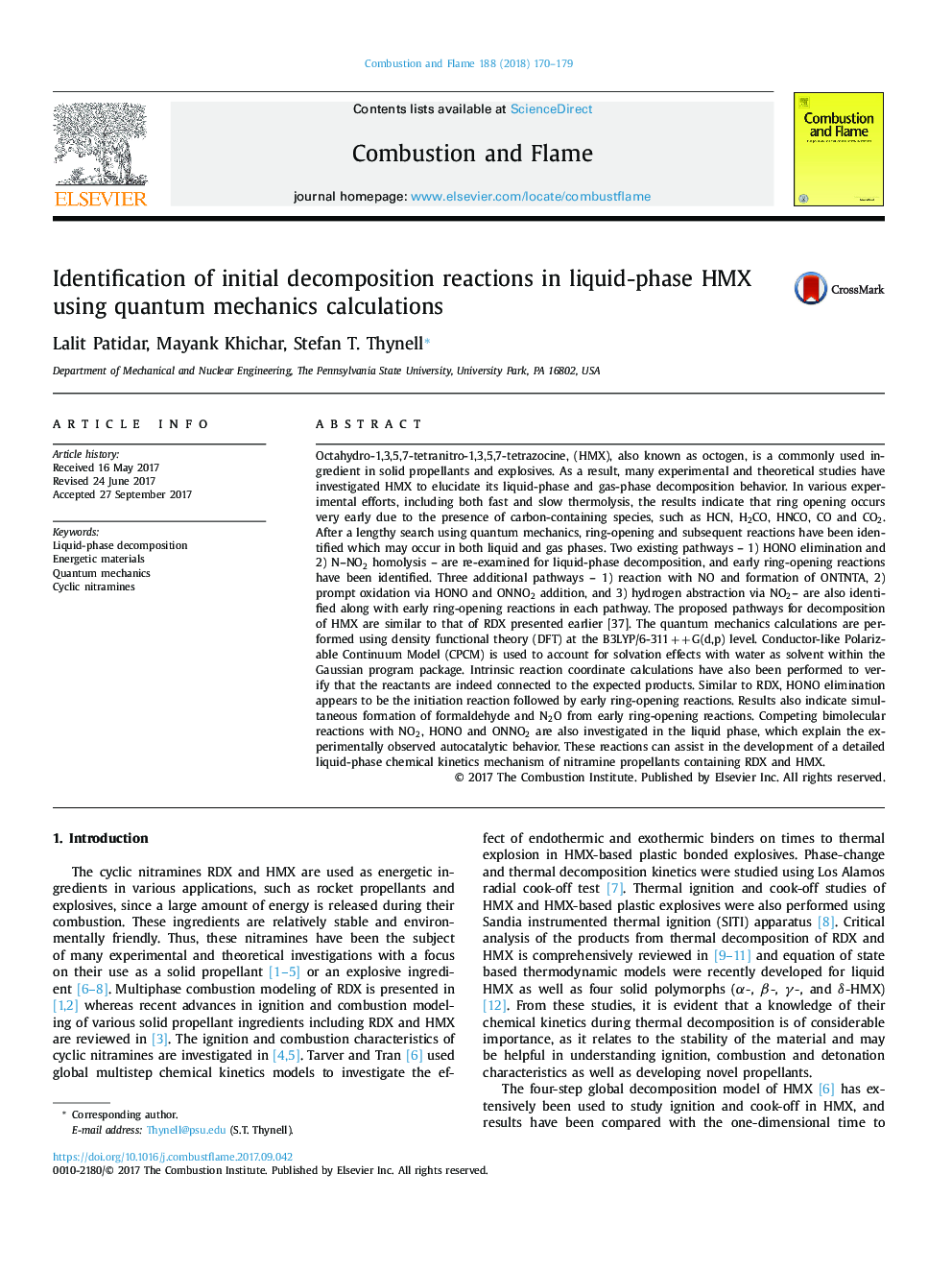| Article ID | Journal | Published Year | Pages | File Type |
|---|---|---|---|---|
| 6593945 | Combustion and Flame | 2018 | 10 Pages |
Abstract
Octahydro-1,3,5,7-tetranitro-1,3,5,7-tetrazocine, (HMX), also known as octogen, is a commonly used ingredient in solid propellants and explosives. As a result, many experimental and theoretical studies have investigated HMX to elucidate its liquid-phase and gas-phase decomposition behavior. In various experimental efforts, including both fast and slow thermolysis, the results indicate that ring opening occurs very early due to the presence of carbon-containing species, such as HCN, H2CO, HNCO, CO and CO2. After a lengthy search using quantum mechanics, ring-opening and subsequent reactions have been identified which may occur in both liquid and gas phases. Two existing pathways - 1) HONO elimination and 2) NNO2 homolysis - are re-examined for liquid-phase decomposition, and early ring-opening reactions have been identified. Three additional pathways - 1) reaction with NO and formation of ONTNTA, 2) prompt oxidation via HONO and ONNO2 addition, and 3) hydrogen abstraction via NO2- are also identified along with early ring-opening reactions in each pathway. The proposed pathways for decomposition of HMX are similar to that of RDX presented earlier [37]. The quantum mechanics calculations are performed using density functional theory (DFT) at the B3LYP/6-311â¯+â¯+â¯G(d,p) level. Conductor-like Polarizable Continuum Model (CPCM) is used to account for solvation effects with water as solvent within the Gaussian program package. Intrinsic reaction coordinate calculations have also been performed to verify that the reactants are indeed connected to the expected products. Similar to RDX, HONO elimination appears to be the initiation reaction followed by early ring-opening reactions. Results also indicate simultaneous formation of formaldehyde and N2O from early ring-opening reactions. Competing bimolecular reactions with NO2, HONO and ONNO2 are also investigated in the liquid phase, which explain the experimentally observed autocatalytic behavior. These reactions can assist in the development of a detailed liquid-phase chemical kinetics mechanism of nitramine propellants containing RDX and HMX.
Related Topics
Physical Sciences and Engineering
Chemical Engineering
Chemical Engineering (General)
Authors
Lalit Patidar, Mayank Khichar, Stefan T. Thynell,
